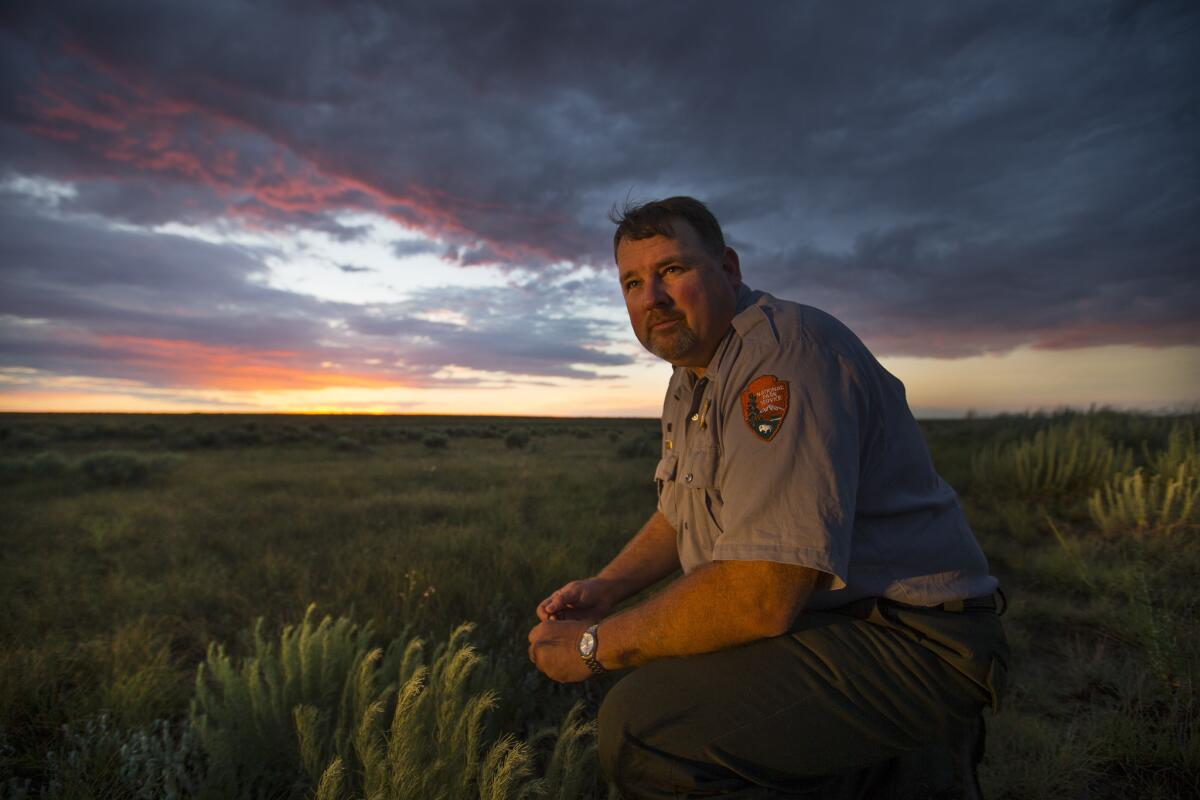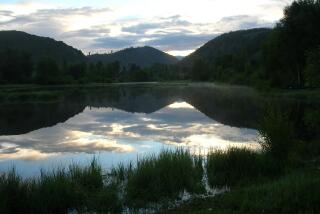‘Sand Creek is the story of individuals,’ soldiers, warriors, victims, heroes and criminals

A glimpse of the Sand Creek Massacre National Historic Site near Eads, Colo.
- Share via
When talking about the massacre at Sand Creek, rangers with the National Park Service frequently turn to stories of the soldiers and warriors, the victims, the heroes and criminals caught up in the momentum of that terrible day.
They speak of Black Kettle. This Cheyenne leader, born in the early 1800s in the Dakotas, saw the world of the Great Plains turned upside down in just decades.
Even after Sand Creek, he sought peace with the United States government. He was killed by the 7th Cavalry in 1868.
READ: Confronting our history and ‘unspeakable acts’ at the site of the Sand Creek massacre »
Sand Creek is the story of individuals.
— Shawn Gillette

They speak of Edward Wynkoop, a good soldier committed to following orders until he met Black Kettle. The two men respected each other, and after the massacre, Wynkoop was among the first to condemn Chivington.
And they speak of Making Medicine, who survived Sand Creek and later imprisonment at Ft. Marion in Florida. Baptized an Episcopalian, he became a church deacon, and in 1985 he was canonized.
“Sand Creek speaks to me in a way that Gettysburg doesn’t,” says Shawn Gillette, a ranger at Sand Creek.
“Gettysburg is big. They talk about the 6th Wisconsin volunteers or the 8th Louisiana infantry, but Sand Creek is the story of individuals.”
Heightening the drama are the moral questions the massacre evokes, and for that, ranger Craig Moore turns to two soldiers who made two distinct decisions on that day.
If Sand Creek has a hero, it might be Silas Soule. Soule, along with Joseph Cramer, refused to engage in the fighting. They were not entirely alone in their disobedience. Accounts of the assault tell of others who chose to fire their rifles above the Cheyenne and Arapaho.
Their “malicious obedience,” as it is called, could have resulted in discipline and court-martial.
But it was Soule and Cramer, who wrote letters just weeks afterward, that brought to light details of the massacre. Their plain-spoken account didn’t spare details and informed the commissions that would condemn the attack just a year later.
Moore contrasts their experience with that of Oliver Baxter, who in the aftermath claimed to have killed as many as 50 Cheyenne and Arapaho in one skirmish during that long day.
When the massacre was over, he too wrote a letter describing how Colorado had been cured of its Indian problem.
Afterward, he prospered as a rancher, banker and in real estate. In his obituary, he was described as “a friend of the friendless and his deeds of charity, unheralded by the public, were legion.”
“So who was the real Oliver Baxter?” asks Moore. “Or are we all Oliver Baxters? I ask myself this every day.”
Confronting our history and ‘unspeakable acts’ at the site of the Sand Creek massacre
‘So it won’t happen again’: How the descendants remember the Sand Creek massacre
Memorials to a tragic past: National Park Service sites that consider the dark side of our history
More to Read
Sign up for The Wild
We’ll help you find the best places to hike, bike and run, as well as the perfect silent spots for meditation and yoga.
You may occasionally receive promotional content from the Los Angeles Times.







